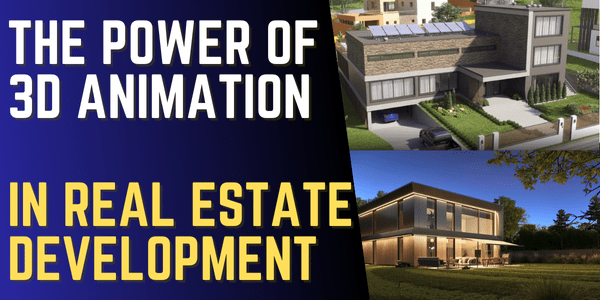
The Power of 3D Animation in Real Estate Development
In the fast-paced world of real estate development, technology continues to play a crucial role in revolutionizing how properties are presented, marketed, and sold. One of the most transformative tools in this space is 3D animation, which has significantly improved how potential buyers, investors, and stakeholders experience and visualize real estate. This advanced visualization technique has become indispensable in today’s property development landscape, offering an engaging, immersive experience that traditional methods cannot match.
What is 3D Animation of Real Estate?
3D animation involves creating a detailed, lifelike visual representation of real estate using cutting-edge computer graphics. This digital tool allows developers to showcase a property in its fully constructed state before it even breaks ground. By integrating architecture, landscaping, lighting, and interior designs into a moving simulation, 3D animation of real estate gives potential buyers and investors an in-depth view of how the property will look and feel once completed.
The animations can vary in complexity, from simple walkthroughs to fully interactive tours that allow users to explore every corner of the property. These animations can depict everything from the exterior design to the layout of individual rooms, helping clients make well-informed decisions based on a true-to-life depiction.
Key Benefits of 3D Animation in Real Estate Development
1. Enhanced Visualization
The primary advantage of using 3D animation is its ability to bring architectural designs to life. Unlike 2D drawings or static models, a 3D animated video allows viewers to see the entire real estate property from every angle, giving them a full understanding of the space. Developers can showcase different building materials, lighting conditions, and even how the environment will look at various times of the day.
This heightened level of realism is invaluable for real estate developers, especially when pitching projects to investors or prospective buyers who may struggle to visualize the final product from blueprints or floor plans.
2. Cost-Effective Marketing Tool
Traditional marketing materials, such as brochures and physical models, can be expensive and time-consuming to produce. In contrast, 3D animations offer a cost-effective way to showcase an entire real estate project without the need for physical models or staged photography. Once the animation is created, it can be used across multiple platforms, including websites, social media, and virtual presentations, allowing developers to reach a broader audience without additional marketing costs.
For example, a well-designed 3D animation of real estate can be uploaded directly to a developer’s website, shared on social media channels, or used in email marketing campaigns, offering potential clients an immersive viewing experience without the need for an in-person visit.
3. Improved Communication and Understanding
3D animation helps bridge the communication gap between architects, developers, and clients. It allows all parties involved in the project to visualize the same concept, reducing misunderstandings that can occur with 2D plans or verbal descriptions. Investors can see exactly what they’re financing, while buyers can better understand the value of the property, ultimately leading to more informed decisions.
Additionally, developers can use these animations to present different versions of a project, showcasing alternate materials, finishes, or layouts. This flexibility allows potential buyers to customize their future property in a way that best suits their needs and preferences, which can improve sales conversions.
4. Faster Sales Process
The visual impact of 3D animation often results in a faster sales process. Potential buyers and investors are more likely to make decisions when they can clearly see and understand the property they are considering. With traditional marketing methods, clients often need multiple visits to the construction site or office to grasp the full scope of the project. A 3D animation of real estate, however, can give them all the information they need in one engaging video or interactive tour.
Applications of 3D Animation in Real Estate
3D animation is incredibly versatile and can be used in various stages of real estate development:
- Pre-construction Marketing: Developers can use 3D animations to pre-sell properties before construction even begins, helping secure financing or buyers early in the process.
- Virtual Tours: These animations can serve as virtual tours that allow prospective buyers to explore the real estate at their own pace, often from the comfort of their homes. This is especially useful for international buyers who may not be able to visit the property in person.
- Project Updates: Throughout the development process, 3D animations can be updated to reflect changes in design or construction progress, giving stakeholders a real-time view of the project’s status.
- Architectural Presentations: For architects and designers, 3D animations offer a dynamic way to present their vision to clients, ensuring everyone is aligned before moving forward with construction.
The Future of Real Estate Visualization
The real estate industry continues to evolve, with technology playing an increasingly central role in shaping its future. As virtual reality (VR) and augmented reality (AR) become more mainstream, the possibilities for 3D animation are expanding. Developers can now create fully immersive VR tours of real estate, giving clients the ability to walk through and interact with the property as if they were physically there.
As these technologies become more accessible and affordable, we can expect 3D animation to remain a cornerstone of real estate marketing, offering even more sophisticated and engaging ways to present properties.
Conclusion
3D animation has undoubtedly transformed the real estate sector, providing developers, architects, and marketers with a powerful tool to showcase properties in an engaging, realistic way. By offering enhanced visualization, improving communication, and speeding up the sales process, 3D animation of real estate is a game-changer for developers looking to stand out in a competitive market. If you’re interested in learning more about how 3D animation can enhance your real estate project, be sure to explore this detailed service offering.




